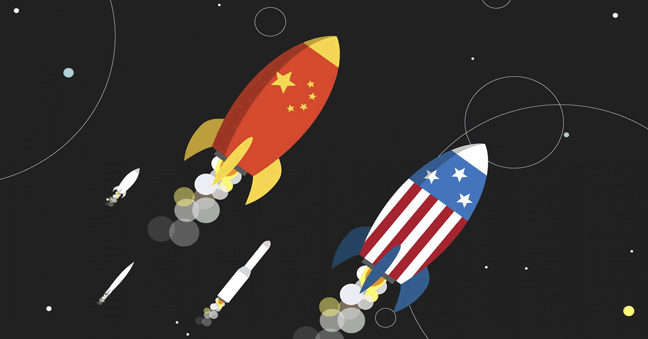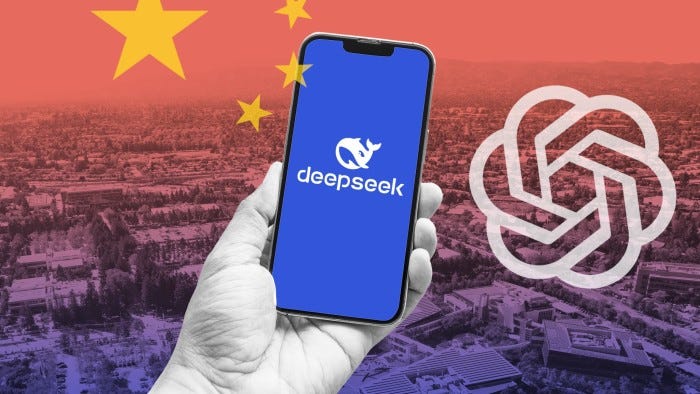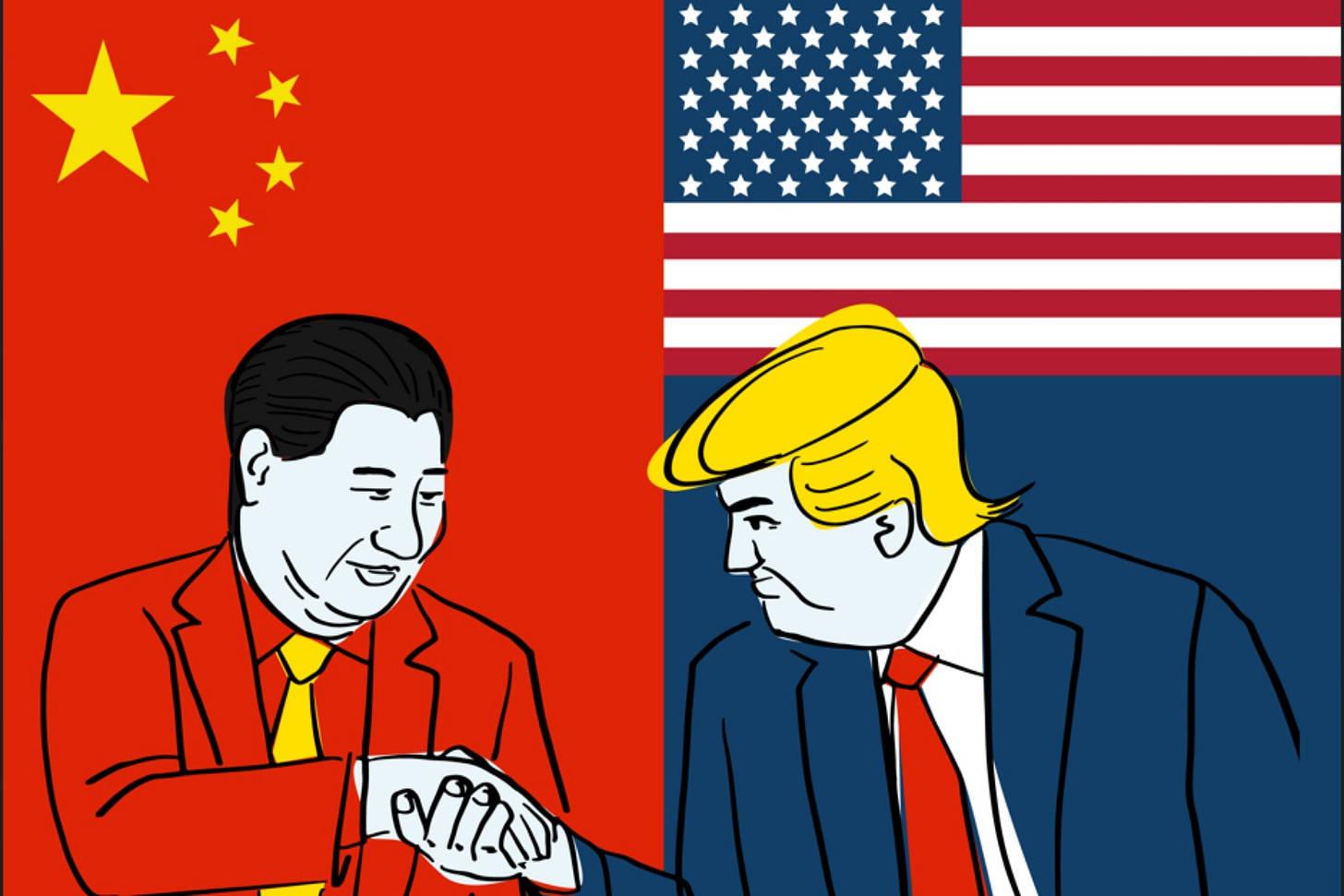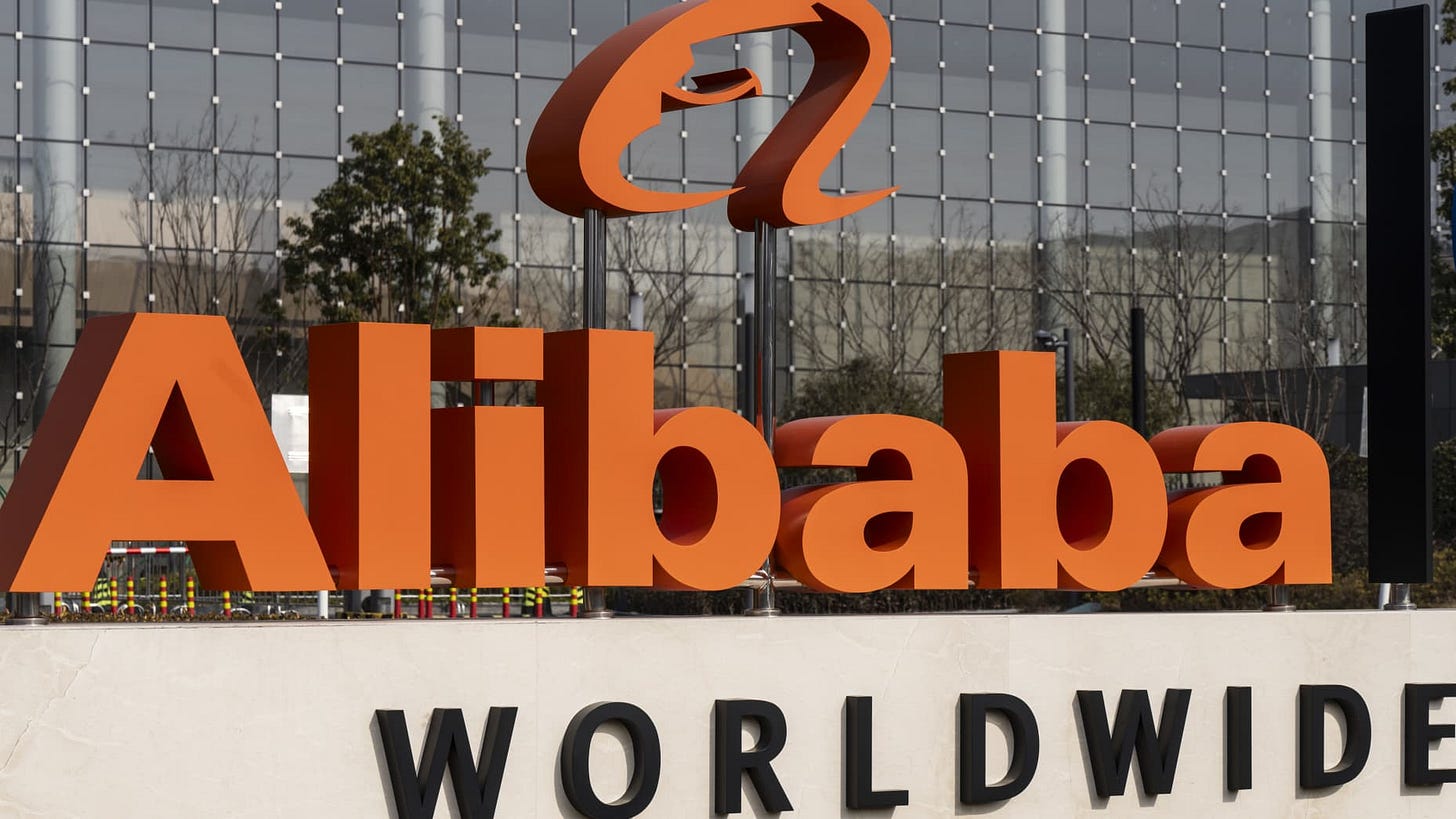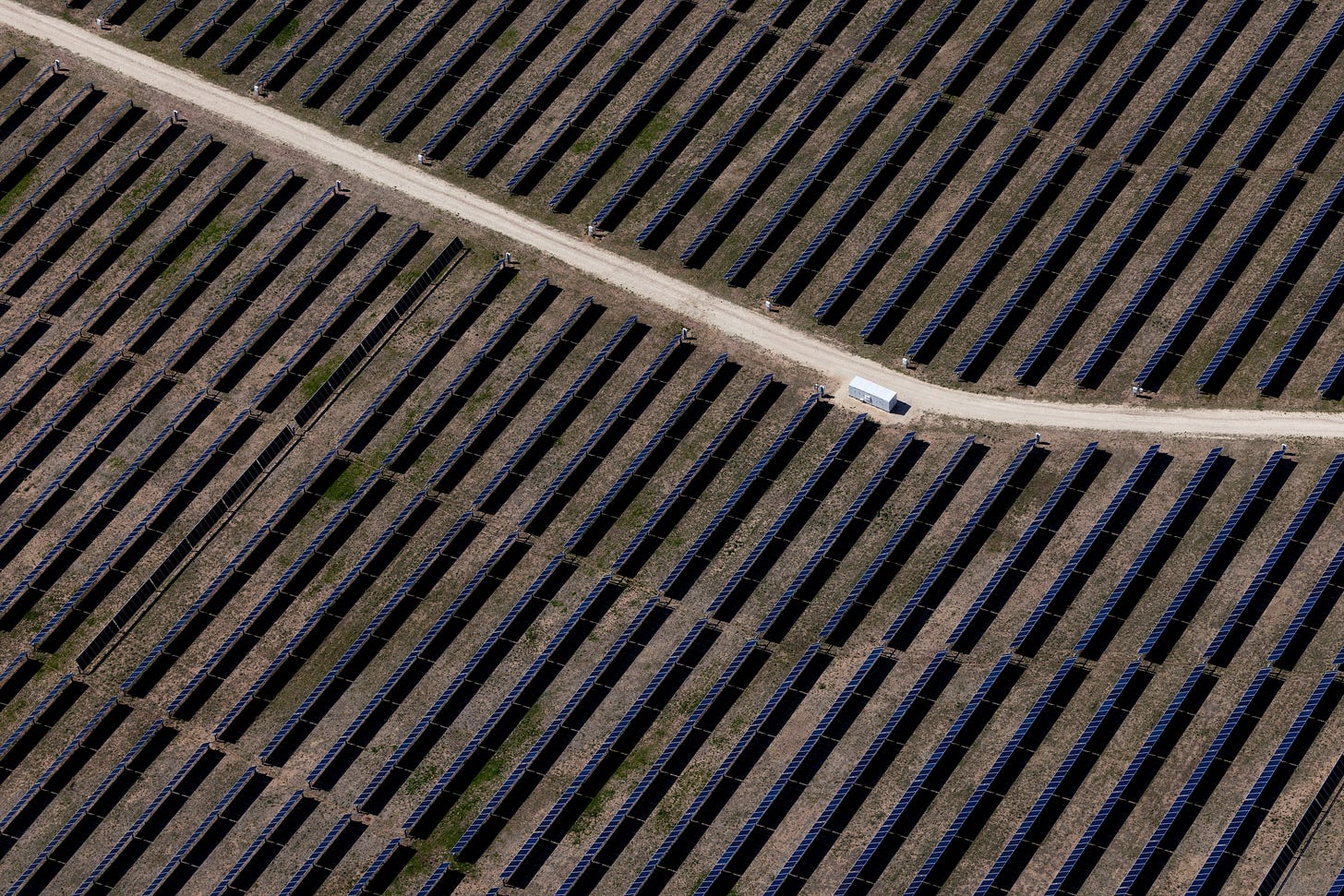
AI: China focused on the AI Applications Prize. RTZ #832
In the current ‘AI Race’ environment between the US and China, the question often asked is who is ahead.
In an ‘infinite game’ of tech waves like this AI Tech Wave, that question is academic. AI tech is going to change society globally, and take decades doing it. But the approach between the two countries on AI efforts is worth noting, especially since China represents the largest AI market outside the US. Nvidia and other US tech companies have a big stake in that market.
But China with its government providing top down support on the Power for AI data center Infrastructure for ‘intelligence token’ generation at Scale, provides a lot of support for their private companies. It leaves a lot more resources for its its tech companies large and small to focus more on the holy grail Box #6 below, for AI Applications and Services in the AI Tech Stack. Especially with open source LLM AIs of late. And of course opportunities for its leading AI companies like DeepSeek, Alibaba and others.
And that is the approach that seems to have the Chinese government’s support as well.
The WSJ paints this picture well in “China Has a Different Vision for AI. It Might Be Smarter.”:
“With growing fears of an AI bubble, Beijing is charting a pragmatic alternative to Silicon Valley’s pursuit of artificial superintelligence.”
“The U.S. is spending billions to win the race to artificial general intelligence, while China focuses on practical, low-cost AI applications.”
“The U.S. is spending billions of dollars and burning gigawatts of energy in a rush to beat China to the next evolutionary leap in artificial intelligence—one so great, some boosters say, that it will rival the atomic bomb in its power to change the global order.”
“China is running a different race.”
Different indeed from the top down:
“Since the release of OpenAI’s ChatGPT nearly three years ago, Silicon Valley has spent mountains of money in pursuit of AI’s holy grail: artificial general intelligence that matches or beats human thinking. Enthusiasts say it will give the U.S. insurmountable military advantages, help cure cancer and solve climate change, and eliminate the need for people to perform routine work such as accounting and customer service.”
“In China, by contrast, leader Xi Jinping has recently had little to say about AGI. Instead, he is pushing the country’s tech industry to be “strongly oriented toward applications”—building practical, low-cost tools that boost China’s efficiency and can be marketed easily.”
“The diverging visions represent a head-to-head bet with significant stakes. If China’s gamble turns out to be wrong, it could find itself lagging far behind the U.S. in the most consequential technology of the 21st century.”
While the US companies are wrapped up in a constant discussion of time and scope of the roadmap AGI and AI Superintelligence, the Chinese side is focused on the more prosaic and practical matter of bottom up AI applications and services.
“But if AGI remains a distant dream, as more people in Silicon Valley now believe, China will be in position to steal a march on its global rival in wringing the most out of AI in its current form, and spread its applications worldwide.”
“Already in China, domestic AI models similar to the one that powers ChatGPT are being used, with state approval, to grade high-school entrance exams, improve weather forecasts, dispatch police and advise farmers on crop rotation, say state media and government reports.”
“Tsinghua University, China’s equivalent of the Massachusetts Institute of Technology, is rolling out an AI-powered hospital, where human doctors will be assisted by virtual colleagues armed with the latest data on diseases. Intelligent robots are being deployed to run automotive “dark factories” and inspect textiles for flaws while still on the loom.”
China is racing to build outs its lead in AI manufacturing ecosystems for everything from AI robots to cars, drones and beyond.
“They see highly impactful AI applications not as something to theorize about in the future but as something to take advantage of here and now,” said Julian Gewirtz, a former National Security Council official who specialized in tech competition with China during the Biden administration.”
“U.S. tech companies are developing plenty of practical applications using current AI, of course. Google has wired its latest Pixel smartphones to do real-time translation, while U.S. consulting companies are using AI agents to build PowerPoint decks and sum up interviews for clients. Others are using it to improve drug discovery and food delivery.”
China’s focus is intense from the top down:
“But unlike the U.S., which largely leaves the industry to its own devices, Beijing is putting the full muscle of the state behind its vision. In January, the central government unveiled an $8.4 billion AI investment fund focused on supporting startups. Local governments and state banks have since rolled out their own funding programs, while cities have published AI development plans as part of a campaign dubbed “AI+.”
“On Tuesday, China’s cabinet spelled out broader ambitions for the campaign, calling for an even stronger push to integrate AI into science and tech research, industrial development and other areas to “comprehensively empower” China’s economic development by 2030.”
And of course its commitment to AI open source:
“China is also more actively embracing open-source models that are free for users to download and modify, making it cheaper and easier for Chinese companies to build businesses around the technology. That approach is helping Chinese AI spread globally, a trend that has shaken Silicon Valley into following suit.”
The priorities are a bit different than the ones portrayed in the US:
“That emphasis is somewhat different from the ambitions of many of the U.S.’s biggest tech players, who believe that machines that can outthink humans will revolutionize science, open up entirely new fields of inquiry and transform the American military.”
“Some in the tech industry have predicted that artificial superintelligence could arrive as soon as 2027. Companies such as Meta, Google and OpenAI are spending lavishly in a competition to acquire the talent, data centers and energy they need to be first.”
And US Regulators are also focused on the race from a macro race perspective:
“A congressional commission focused on competition with China has floated a “Manhattan Project” for AGI to ensure the U.S. wins the race.”
“But OpenAI’s highly anticipated release in August of GPT-5, a model the company had initially touted as a major steppingstone on the path to AGI, left many users underwhelmed. OpenAI’s Sam Altman acknowledged the bumpy rollout and has since tried to tap the brakes on AGI hype and warned about the possibility of an AI investment bubble.”
The varying approaches are debated here as welL:
“Other Silicon Valley titans have also started to waver, opening the door to the idea that China’s approach might make more sense.”
“It is uncertain how soon artificial general intelligence can be achieved,” former Google Chief Executive Eric Schmidt and technology analyst Selina Xu wrote in a recent opinion column for the New York Times.”
“In being solely fixated on this objective, our nation risks falling behind China, which is far less concerned with creating A.I. powerful enough to surpass humans and much more focused on using the technology we have now.”
AI Infrastructure is of course a focus in China, not just at the public level. Alibaba this week saw it stock up over 10% on news of its AI Cloud unit performance:
“A major portion of government investment is going to build data centers. But unlike the sprawling facilities being built in the U.S. to train cutting-edge models, the Chinese versions tend to be smaller.”
China also is coming from behind on the semiconductor front, with Nvidia leading the charge here:
“To a large extent, Beijing has no choice but to break a different trail on AI. U.S. trade restrictions, particularly on high-end semiconductors, have made it difficult for Chinese AI companies to compete head-to-head with American giants in scaling up the training of the most advanced models.”
“The choice makes even more sense given growing uncertainty about the return on investment of chasing scale, said Jeffrey Ding, a professor at George Washington University and author of ChinAI, a newsletter focused on Chinese AI.”
“You let the technology leader, the U.S. in this case, eat the cost of exploration, and then you try to be the fast follower or be the one who optimizes for implementation,” he said.”
The one other big difference is of course China’s ample advantage in Power for AI Infrastructure vs the US.
Tom’s Hardware explains it well in “AI experts warn that China is miles ahead of the US in electricity generation — lack of supply and infrastructure threatens the US’s long-term AI plans”:
“AI data centers demand gigawatts of power that the U.S. grid is struggling to supply.”
“A U.S. analyst of Chinese technology said that the country has already solved its energy problem — at least in terms of power for its AI infrastructure. Rui Ma, founder of Tech Buzz China, posted on X that the country’s massive investments in advanced hydropower and nuclear technologies meant that its “electricity supply is secure and inexpensive.” This is in contrast to the U.S., where many AI data centers are disrupting its electricity grid and supply, resulting in a lack of supply and price increases for every user.”
“Both Washington and Beijing are currently in an AI race, with the two powers vying for the lead in this technology. Because of this, the two rivals are diving into a massive build-out of AI data centers that require massive amounts of electricity to run. In the U.S., it has come to the point that tech giants are building their own power plants — with Elon Musk importing one to power his data centers and companies, like Microsoft, Google, Amazon, Oracle, Nvidia, and more investing in the research and development of nuclear reactors.”
Power for AI is a focus in the US of course, but China is ahead here:
“However, it seems that this is not a problem for China. According to Fortune, the East Asian country has an 80% to 100% power reserve, allowing it to absorb the massive demand brought about by the hundreds of data centers it built in recent years. More than that, it’s also continually expanding its output, with one expert telling the publication that it “adds more electricity demand than the entire annual consumption of Germany, every single year.”
And despite the de-emphasis on renewable energy sources like solar and wind in the US, China is charging ahead on this front.
“Some argue that the power is delivered by heavily polluting coal plants, but China is also investing massively in renewable energy projects. Nevertheless, if the power demand outstrips supply, it can easily reactivate coal plants to cover the shortfall. In fact, the new data centers are welcomed, as they help stimulate demand in a market that has an excess of power production. Nevertheless, electricity oversupply doesn’t seem to be an immediate concern, as most of China’s power plants are state-owned. Beijing also plans its energy production well in advance, allowing it to prepare for prospective demand, like the AI data center boom.”
US companies are of course aware of the relative handicap on AI Power:
“On the other hand, the U.S. faces major hurdles with its electricity supply. Meta founder Mark Zuckerberg said that power constraints will limit AI growth, and that new power plants aren’t being built fast enough to satisfy AI’s insatiable demand. If the U.S. does not address this issue sooner, it risks lagging behind China even if it has more powerful and efficient hardware. That’s because the latter can just throw tons of power to gain the upper hand in the AI race through sheer brute force, similar to how Huawei’s CloudMatrix cluster beats the performance of Nvidia’s GB200.”
Overall, the contrast in approaches by both the public and private sectors in the China and the US is illustrative of the challenges vs the longer term opportunities in this AI Tech Wave.
It’s all important to keep in mind as we track this ‘infinite game’ race in AI ahead. Stay tuned.
(NOTE: The discussions here are for information purposes only, and not meant as investment advice at any time. Thanks for joining us here)



